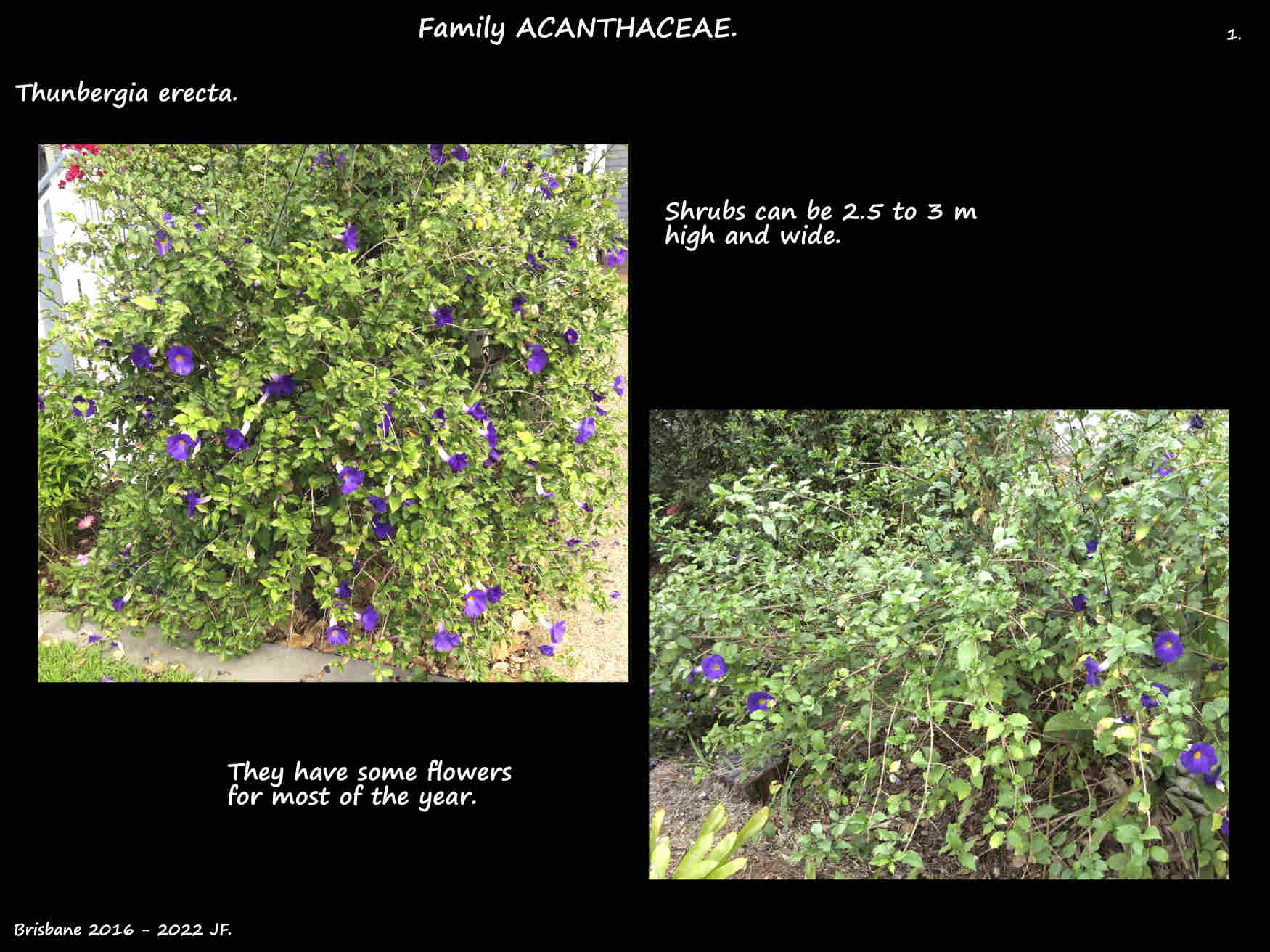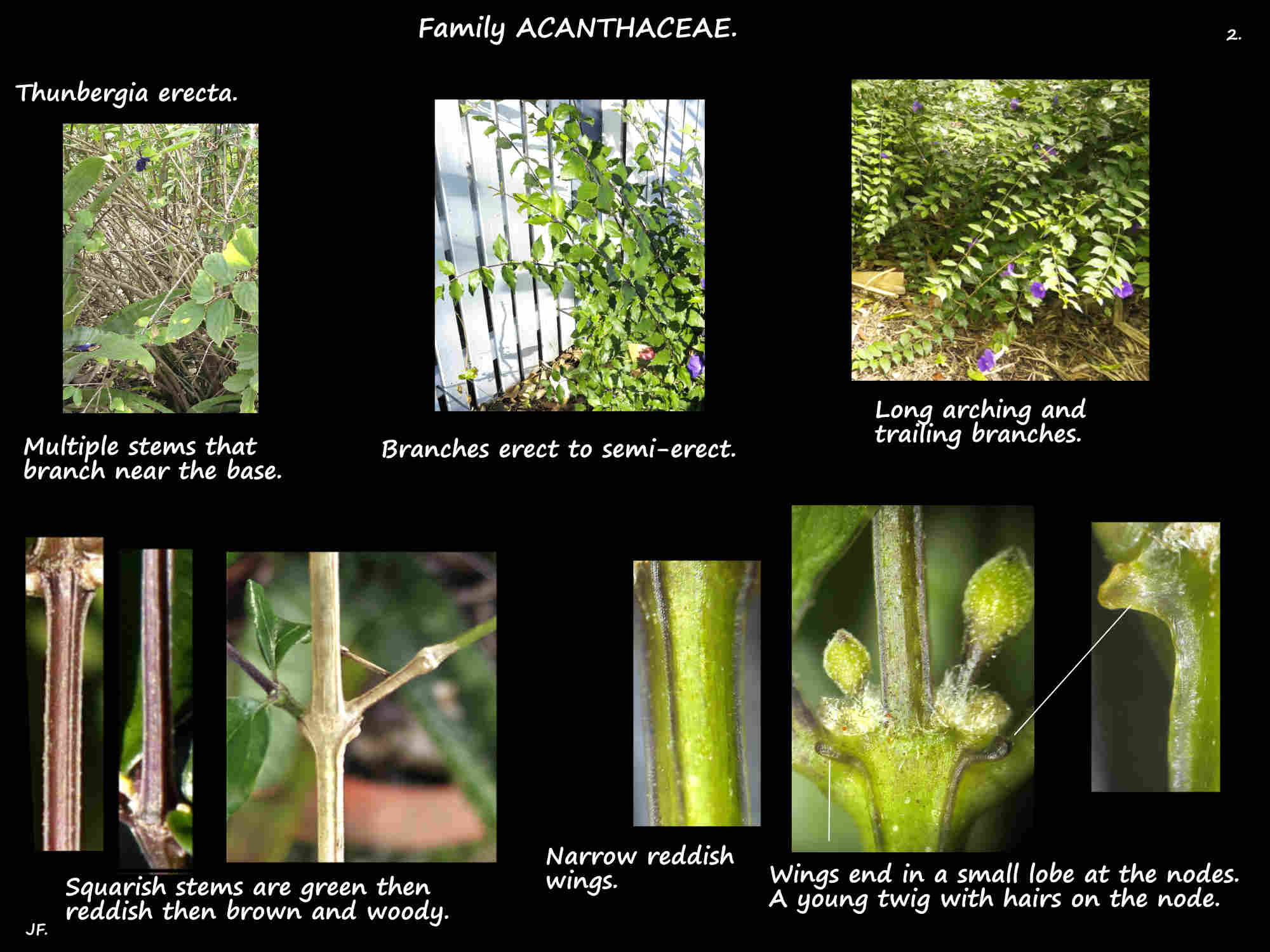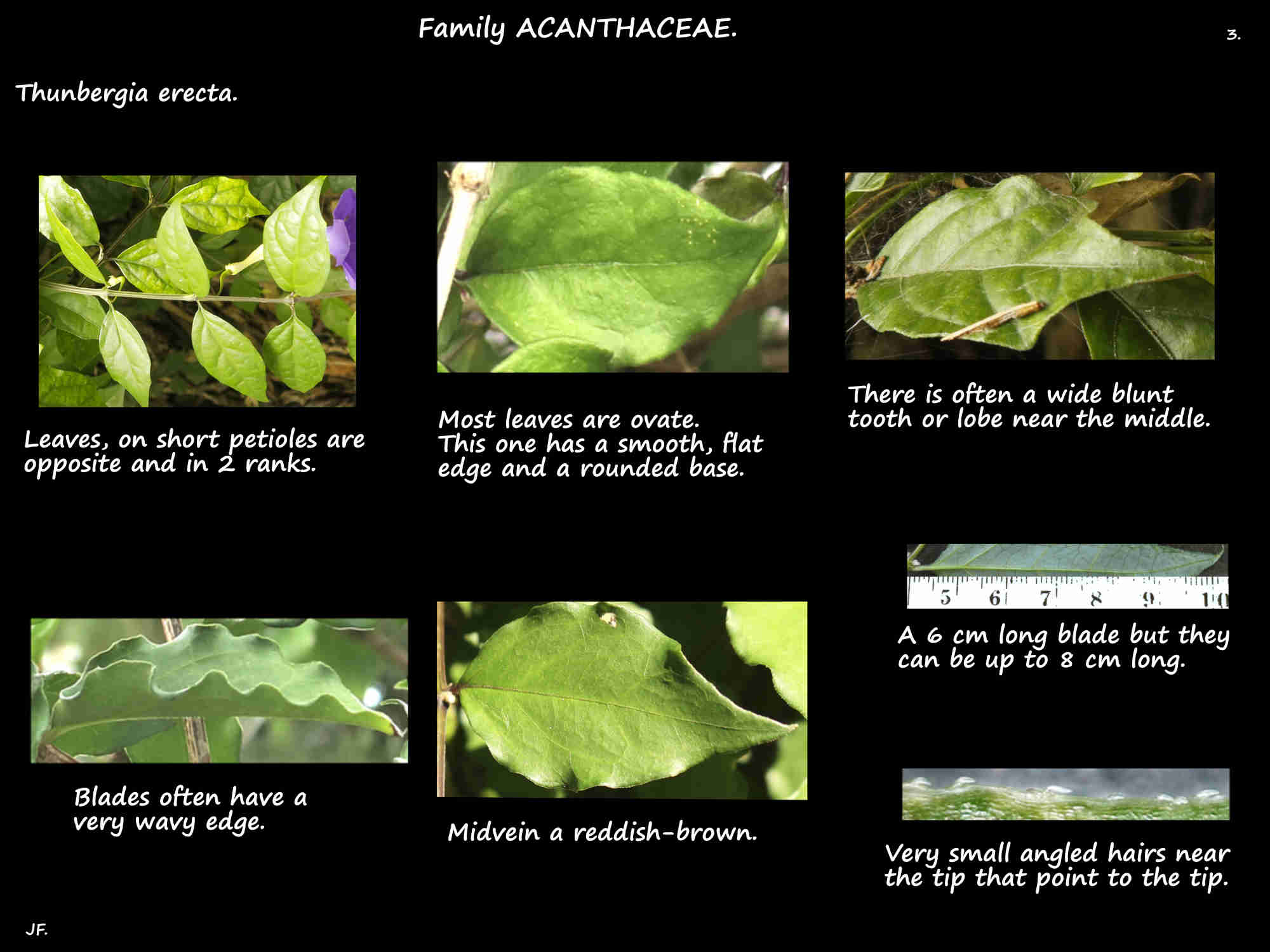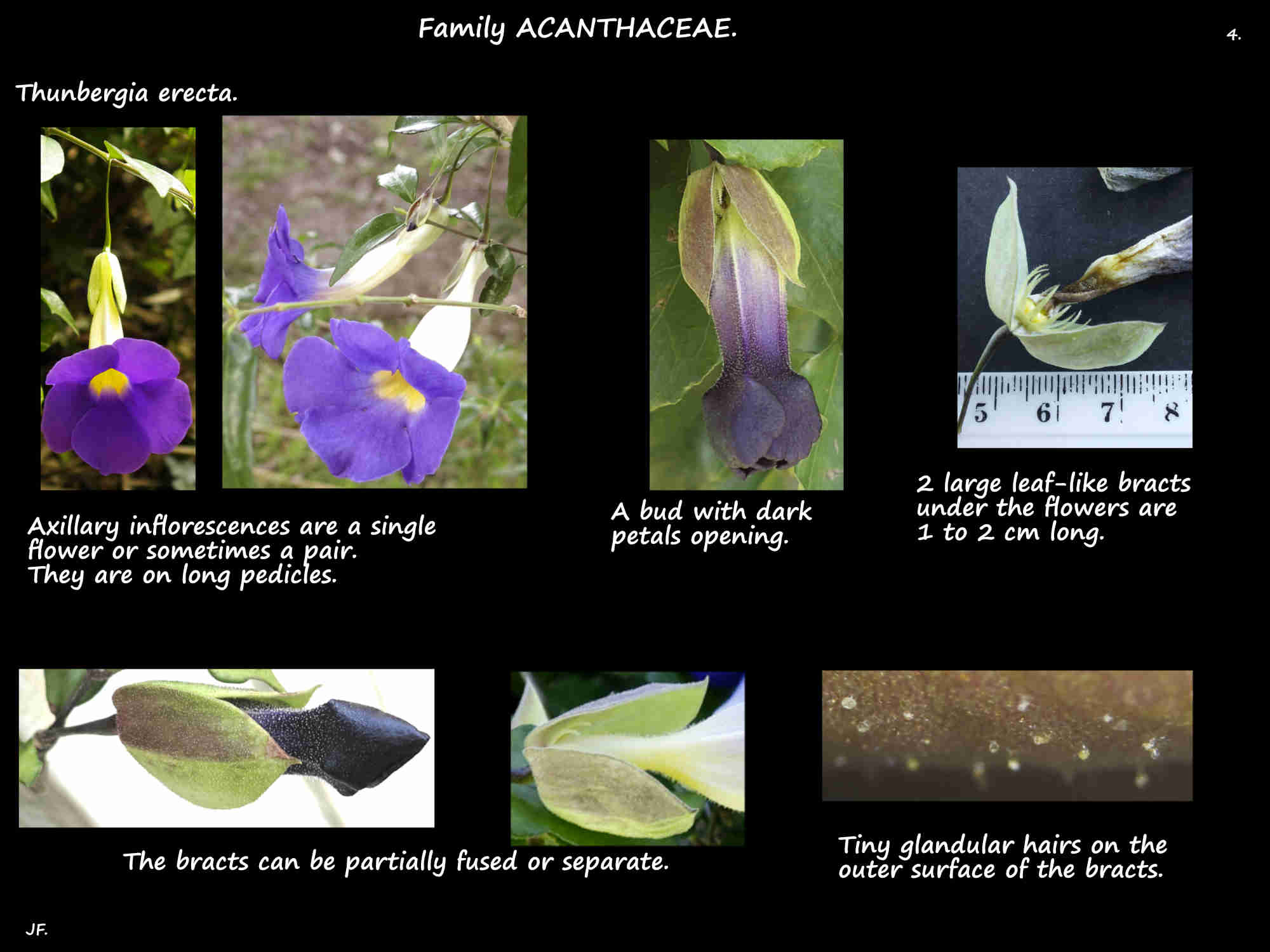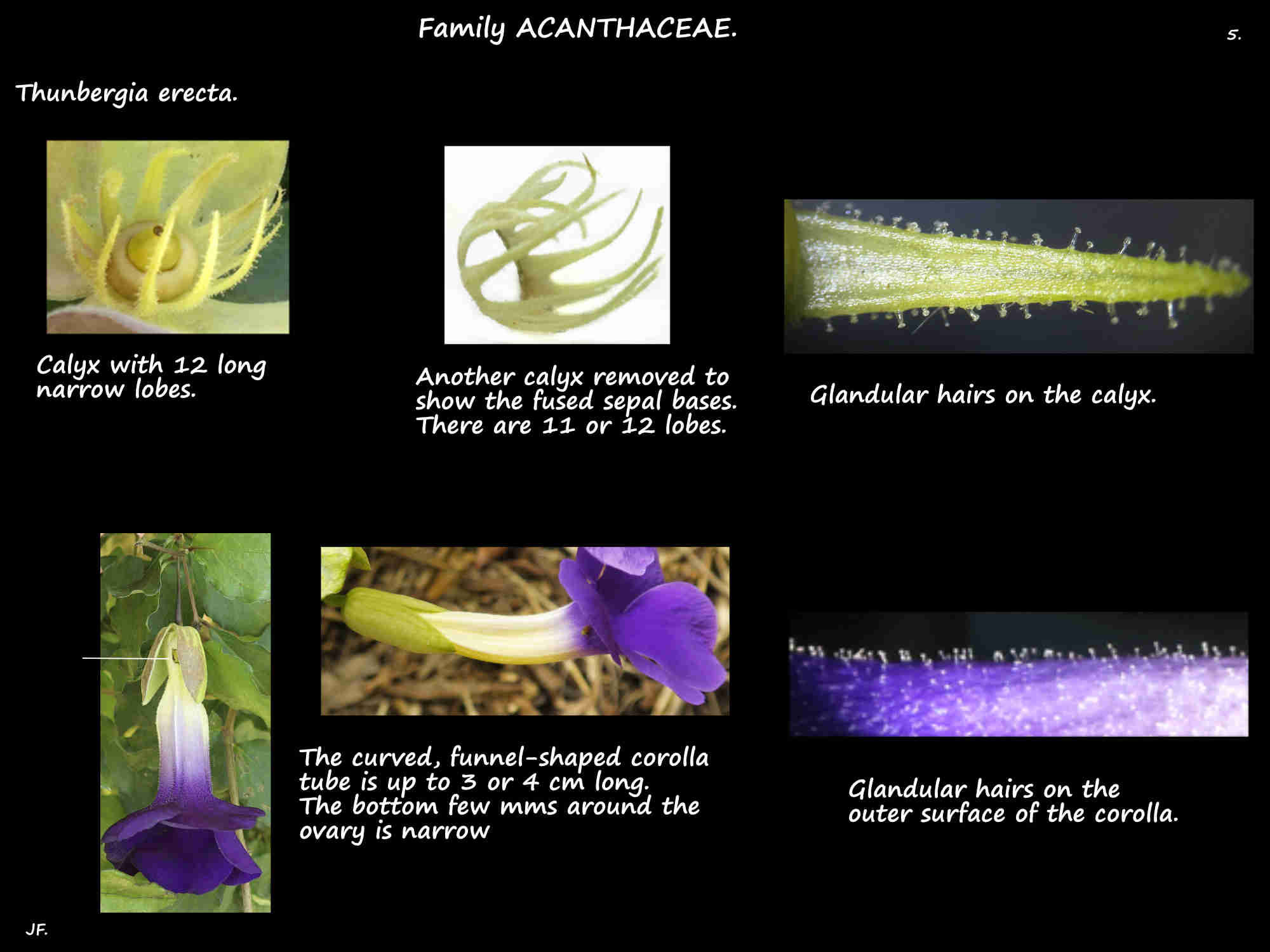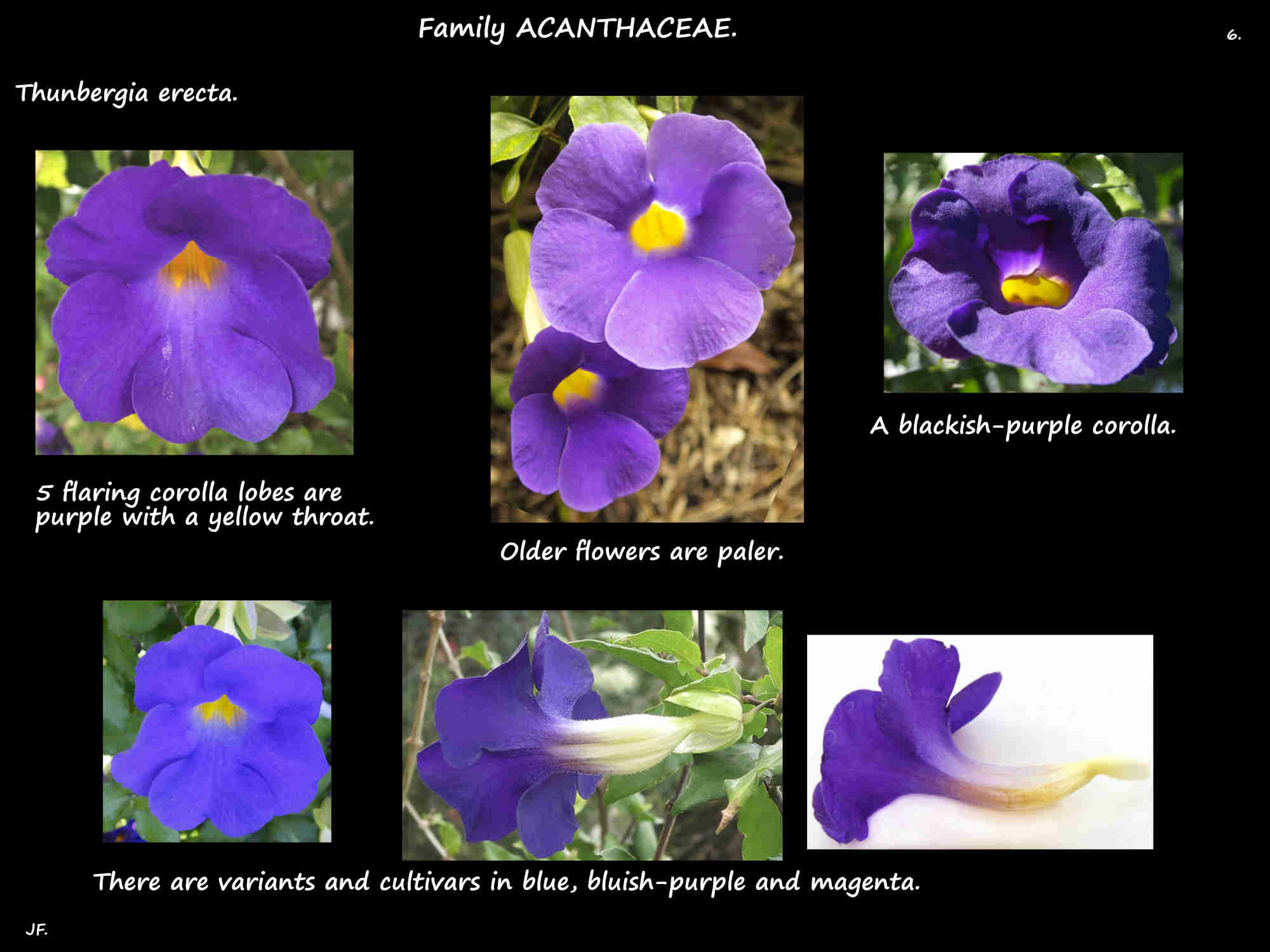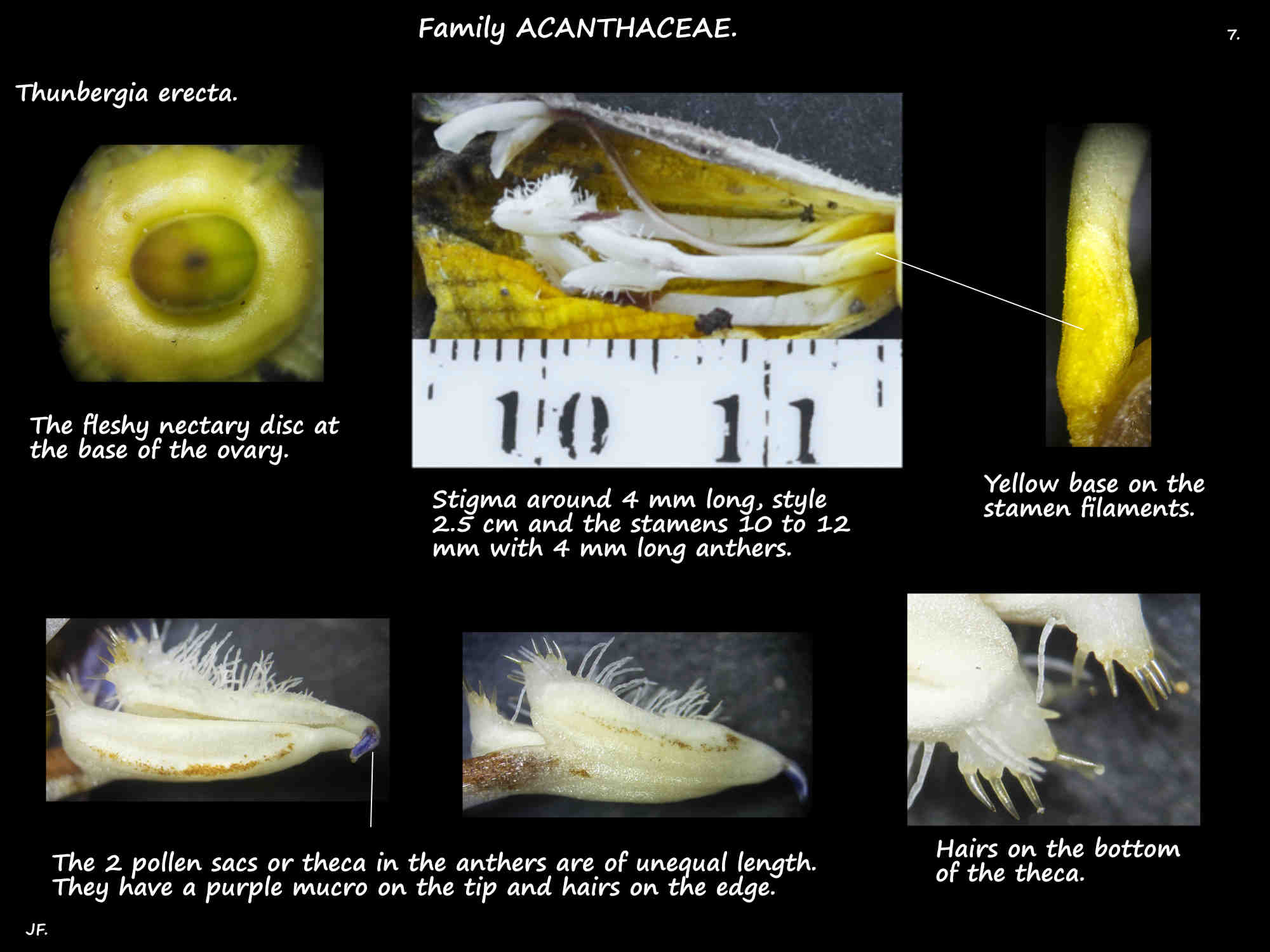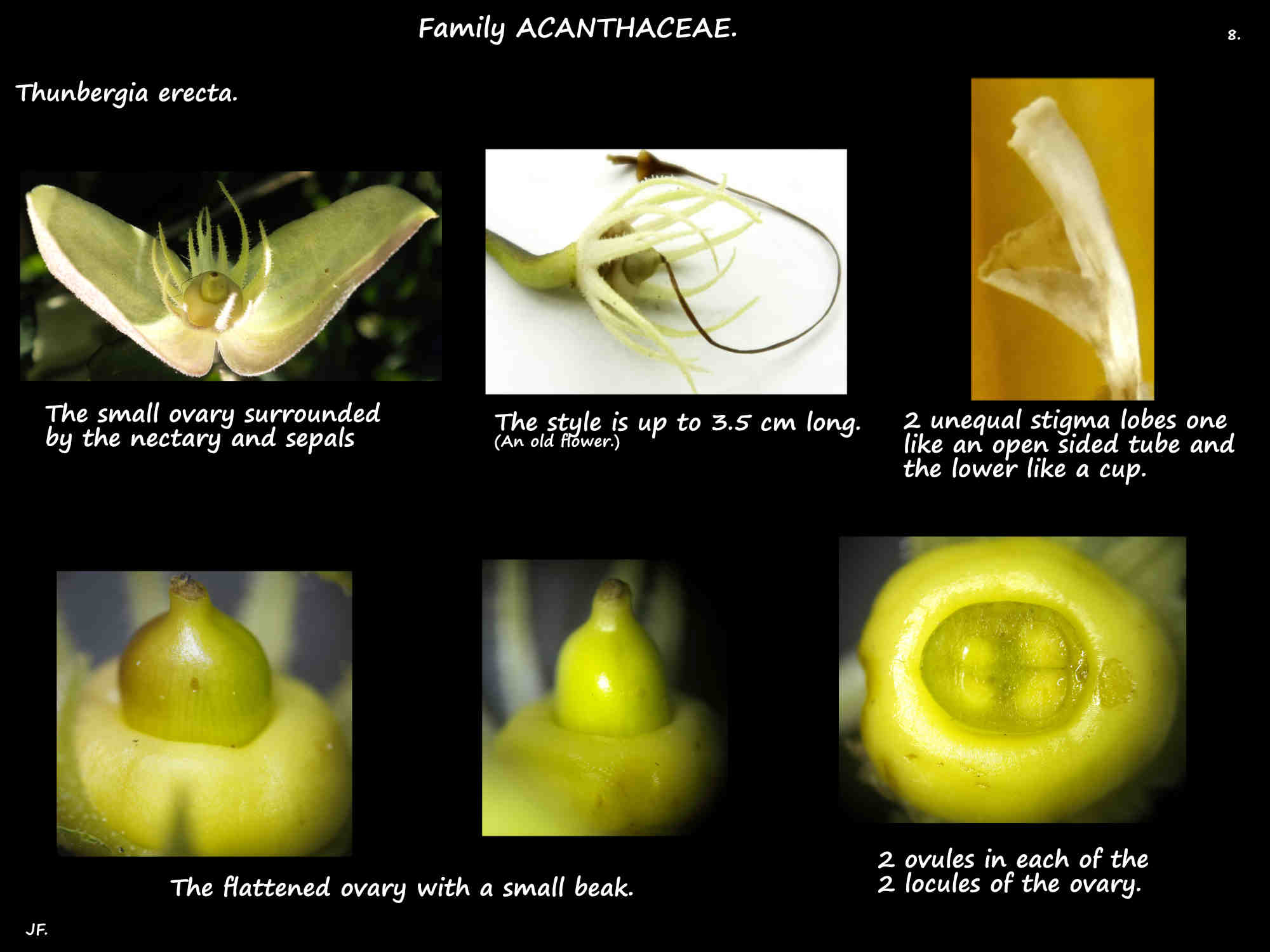Thunbergia erecta.
The Bush clock vine is commonly seen in Brisbane.
They are multi-stemmed shrubs up to 2.5 or 3 m high and wide.
They branch at ground level into long stems.
The slender stems are erect or semi-erect then drooping and with support they can clamber higher.
The young green stems are square in cross section and the angles have narrow wings which widen at the nodes.
Older branches are a reddish-brown then they become brown and woody.
The only hairs are on the nodes of young twigs.
The foliage is dense with leaves in opposite pairs.
The petioles, up to 6 mm long may have a few hairs but often have none.
The blades are up to 7 or 8 cm long and 4 cm wide.
They are typically ovate but may be elliptic or lanceolate.
The leaf edges can be smooth or have a wide blunt tooth near the middle.
The tip is pointed, the base rounded to heart-shaped and the edge is wavy mainly at the base.
There may be no hairs or some along the midrib on both surfaces.
Axillary inflorescences are a solitary flower or a pair.
The hairless peduncles/pedicels are up to 3 or 4 cm long.
The tubular, trumpet or salverform shaped flowers have 2 large spathe-like bracts.
The pale green ovate to elliptic bracts are 1 to 2 cm long and 1 cm wide.
The tip is pointed and there may be tiny hairs on it.
The bracts may be partly fused but are mostly free.
The calyx has 10 to 15 narrow pointed lobes with their bases fused for about 3 mm.
The lobes are covered in glandular hairs.
The corolla has a tube 3 to 4 cm long with 5 flaring lobes up to 2.5 cm long.
There are glandular hairs externally.
The lower 7 mm of the tube curves around the ovary and constricts to 2 or 3 mm above it.
The long upper section is funnel-shaped and up to 1.5 cm wide at the top.
Typically curved it is white to cream.
The 5 unequal corolla lobes are slightly obovate with a rounded end.
The lobes are a deep purple and the throat is yellow.
There are varieties with white, purplish-blue or magenta petals.
There are 4 stamens in 2 slightly unequal pairs.
One pair has filaments up to 12 mm long and the other pair is up to 14 mm.
There are glandular hairs along the filaments.
The 4 to 5 mm long anthers have 2 pollen sacs or thecae of unequal size.
The thecae have hairs along them and a mucro at the top.
There is an annular nectiferous disc around the ovary.
The ovary, of 2 fused carpels has 2 locules each with 2 ovules.
The style is around 3.5 cm long and has a stigma with 2 unequal lobes.
The fruit are rounded hairless capsules up to 3 cm across with a beak.
They have up to 4 dark brown seeds.
Fruit are rarely seen in cultivation with propagation being by cuttings.
J.F.

